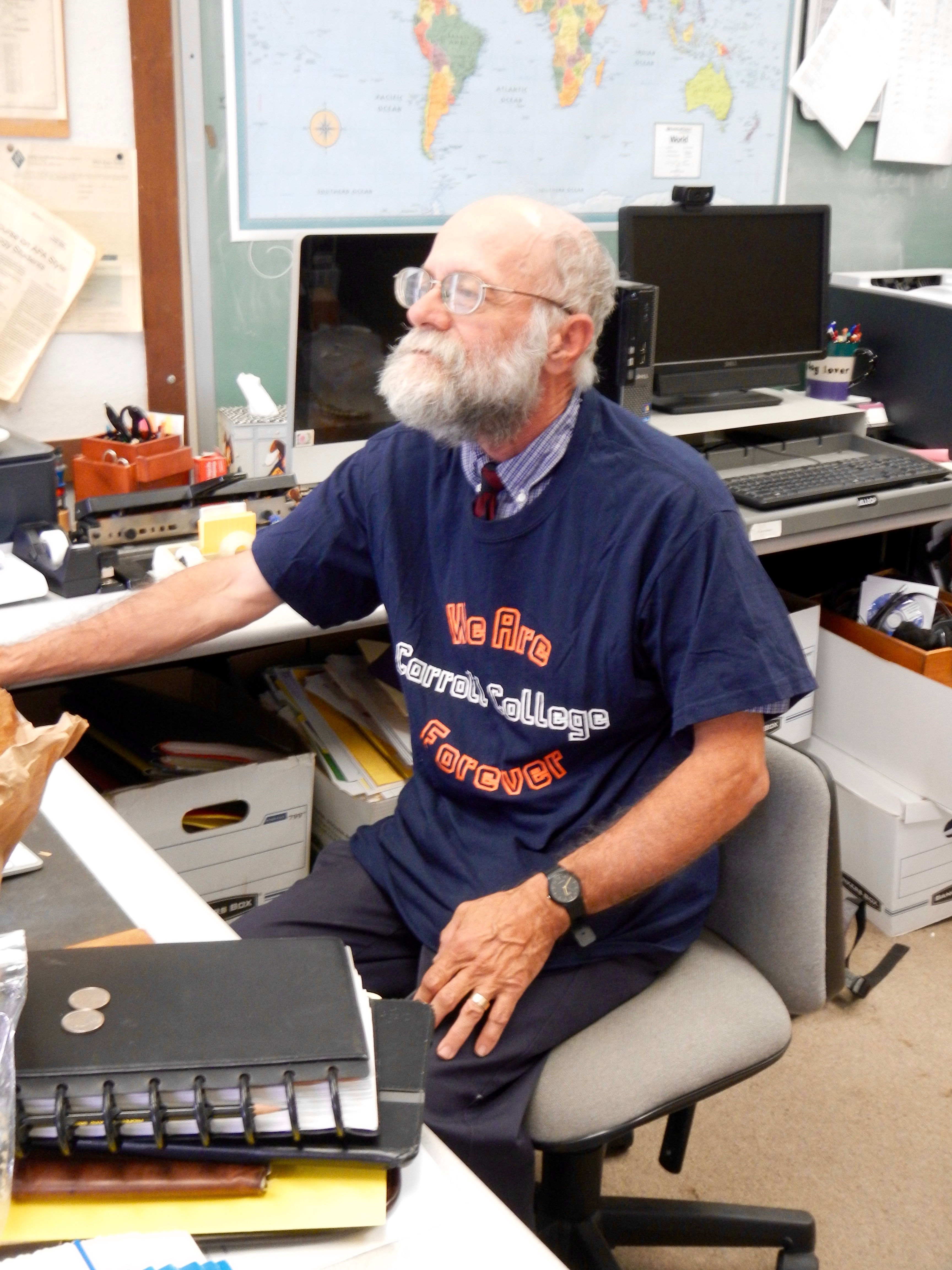 I’ve been reflecting lately on my role as faculty adviser to undergraduates here at Carroll and about those faculty who played such a crucial role in that capacity for me. Without doubt their influence shaped how and why I relate to students and former students as I do.
I’ve been reflecting lately on my role as faculty adviser to undergraduates here at Carroll and about those faculty who played such a crucial role in that capacity for me. Without doubt their influence shaped how and why I relate to students and former students as I do.
At Oberlin College my most influential adviser was Ralph H. Turner. Ralph, the first faculty member to invite me to address him by his first name, somehow was able to provide me the right balance of challenge and support I needed both inside and outside the classroom. I fondly and respectfully remember him as intellectually curious, patient, playful, kind, and unusually generous in his time with me. Indeed he was willing to stay in touch with me even across the years that I was continuing my education at The Ohio State University. Thank you, Ralph.
I was blessed with a similar and even deeper rich and enduring relationship at Ohio State with Tom Ostrom, who was my adviser, research collaborator, mentor, friend, and role model until the day of his untimely death. Tom provided emotional support for me while I struggled with the likelihood of being pulled out of graduate school to be sent to Vietnam, listened to me as I sorted out my thoughts about getting married, wrote me a teasing letter about a study I should do if I ended up in jail, guided me in the transition from the intense research world of Ohio State to my current home at Carroll and inspired me to share with others my love of learning. His wisdom, lust for life, optimism, sense of humor, firmness, and candor still guide and humble me.
Both individuals so impacted my life in so many ways. I draw upon their wisdom each time I am interacting with a student in an advising capacity or with my student research assistants. Advising is much more than helping students make the transition from high school, providing advice in course selection, or giving guidance in deciding whether there is an afterlife after graduating from Carroll. The lessons taught me by Ralph and Tom aren’t and can’t be learned from adviser training workshops.
Tag: Education
Augmenting My Teaching Capabilities: Top Technology Learning Tools Revisited

Caveat Lector: This blog piece is laden with hypertext links that lead you to additional thoughts I have about these learning tools!
With the deadline for responding to Jane Hart’s annual list of top learning tools imminent, here are my present thoughts on my top technology learning tools:
Reading: I need tools that increases the likelihood of my being able to stay abreast of current events and aware of current research findings that I then can incorporate into my classes in an ongoing basis. Driving to school today while listening to NPR I was alerted to some research dealing with “nudging” individuals to buy more healthy foods by partitioning grocery carts. When my commute was temporarily blocked by a Waukesha train, I took the time to dictate into my cell phone that I should incorporate “nudging research” into my experimental social psychology class. I later added that particular NPR stream to my RSS reader/aggregator. Though I have tried Feedly, I am presently using Inoreader.
I do a lot of online reading, (though I am convinced by Naomi Baron that the printed book has a bright future– Lego Ergo Sum) heeding and feeding my need to learn from Twitter (where I tend to follow a selective list of individuals who share or enlarge my interests), Facebook (where I maintain relationships with former students), and LinkedIn (which has some interesting capabilities for also keeping in touch with alumnae, Board of Trustees, and professional contacts).
Writing: I enjoy writing, and have investigated all of the writing tools on Jane’s list. I also have far-too-many writing (and other) apps on my far-too-many computers which I use across the day. My favorite journaling app of the moment is Day One. Its simplicity (and beauty) intrigues me and it motivates (nags) me to write. Of the six blogging pieces of software I have investigated I continue to use WordPress . It continues to teach me, and it gives me access to a number of individuals who write better than I. It is important to me that I learn from them. As I continue to try and reach out to non-English speaking audiences I am always looking for good language translation software that improves upon Google Translate.
Arithmetic: Among the courses I teach is “Statistics and Experimental Design.” I am also a partner of a consulting firm with Gregory K. Schneider and Jane Schneider. For data analysis purposes I use (and teach) SPSS, the Statistical Package for the Social Sciences though I follow very closely the possibility of switching to something (which is as all encompassing but more user-friendly and which is open source) such as JASP. For conducting surveys I teach and use SurveyMonkey.
Testing/ Quizzing: I continue to search for the ideal Testing/Quizzing tool. Though I have examined ProProfs Quizmaker and Quizlet, I still find of most value a much outdated but still reliably serving my needs software StarQuiz.
Screen Casting: Of the many screen casting tools I have explored, I keep coming back to using Screenflow though I am determined to give Camtasia (both Mac and PC versions) a thorough examination this academic year. I’ve been able to use such software to incorporate into my Statistics classes supplemental tutorials on the use of SPSS. I prefer using Vimeo to YouTube as an outlet for my video productions.
Other Tools on my shortlist for mastering this academic year are Evernote, Imovie, and either Scoopit or Paperli.
What tools do you use to augment your teaching capabilities? What evidence do you have of their success—-or failure?
I welcome your thoughts.
Ten Resources for Contextualizing My Academic Institution's Well Being
I am sitting in front of my Mac in the office listening to the hammering of destruction construction outside while I do the homework to ask intelligent, informed questions of President Hastad and our invited speaker. I am delighted to have just received a “check-in” from my research assistant Tia. Right now preparation for playing soccer (and staying healthy) should be her priority.
Just quickly reviewed this week’s Chronicle of Higher Education with particular focus on articles dealing with “discount rates” and enrollment trends. Usually the updated figures occur around October 1. Here are resources I draw upon to give me a context for trends in higher education. Several of them allow me to create my own comparison group data bases (e.g. for salaries and endowments).
Ten Resources for Putting Into Context My Academic Institution’s Well Being
- Oberlin Strategic Plan Reading List: Source: Web Page shared by David Simpson’s alma mater Oberlin College
- College and University Endowments: Source: Chronicle of Higher Education
- Tuition and Fees: Source: Chronicle of Higher Education
- AAUP Salary Data: Source: Chronicle of Higher Education
- Money Raised by Colleges, 2014 Fiscal Year: Source: Chronicle of Higher Education
- Almanac of Higher Education: Source: Chronicle of Higher Education
- Student Data: Enrollment Trends: Source: Chronicle of Higher Education
- Executive Compensation at Private Colleges: Source: Chronicle of Higher Education
- IPEDS (individual institutions and comparisons)
- CUPA Surveys
Almost Time to Change Out of My Invisibility Cloak
I see that Carroll University’s theme this year is “Change.” Here are some possible avenues to explore:
Ten Resources for Putting Into Context My Academic Institution's Well Being
I am sitting in front of my Mac in the office listening to the hammering of destruction construction outside while I do the homework to ask intelligent, informed questions of President Hastad and our invited speaker. I am delighted to have just received a “check-in” from my research assistant Tia. Right now preparation for playing soccer (and staying healthy) should be her priority.
Just quickly reviewed this week’s Chronicle of Higher Education with particular focus on articles dealing with “discount rates” and enrollment trends. Usually the updated figures occur around October 1. Here are resources I draw upon to give me a context for trends in higher education. Several of them allow me to create my own comparison group data bases (e.g. for salaries and endowments).
Ten Resources for Putting Into Context My Academic Institution’s Well Being
- Oberlin Strategic Plan Reading List: Source: Web Page shared by David Simpson’s alma mater Oberlin College
- College and University Endowments: Source: Chronicle of Higher Education
- Tuition and Fees: Source: Chronicle of Higher Education
- AAUP Salary Data: Source: Chronicle of Higher Education
- Money Raised by Colleges, 2014 Fiscal Year: Source: Chronicle of Higher Education
- Almanac of Higher Education: Source: Chronicle of Higher Education
- Student Data: Enrollment Trends: Source: Chronicle of Higher Education
- Executive Compensation at Private Colleges: Source: Chronicle of Higher Education
- IPEDS (individual institutions and comparisons)
- CUPA Surveys
On Engaging Students (Part 2): Adventures with StarQuiz and SPSS
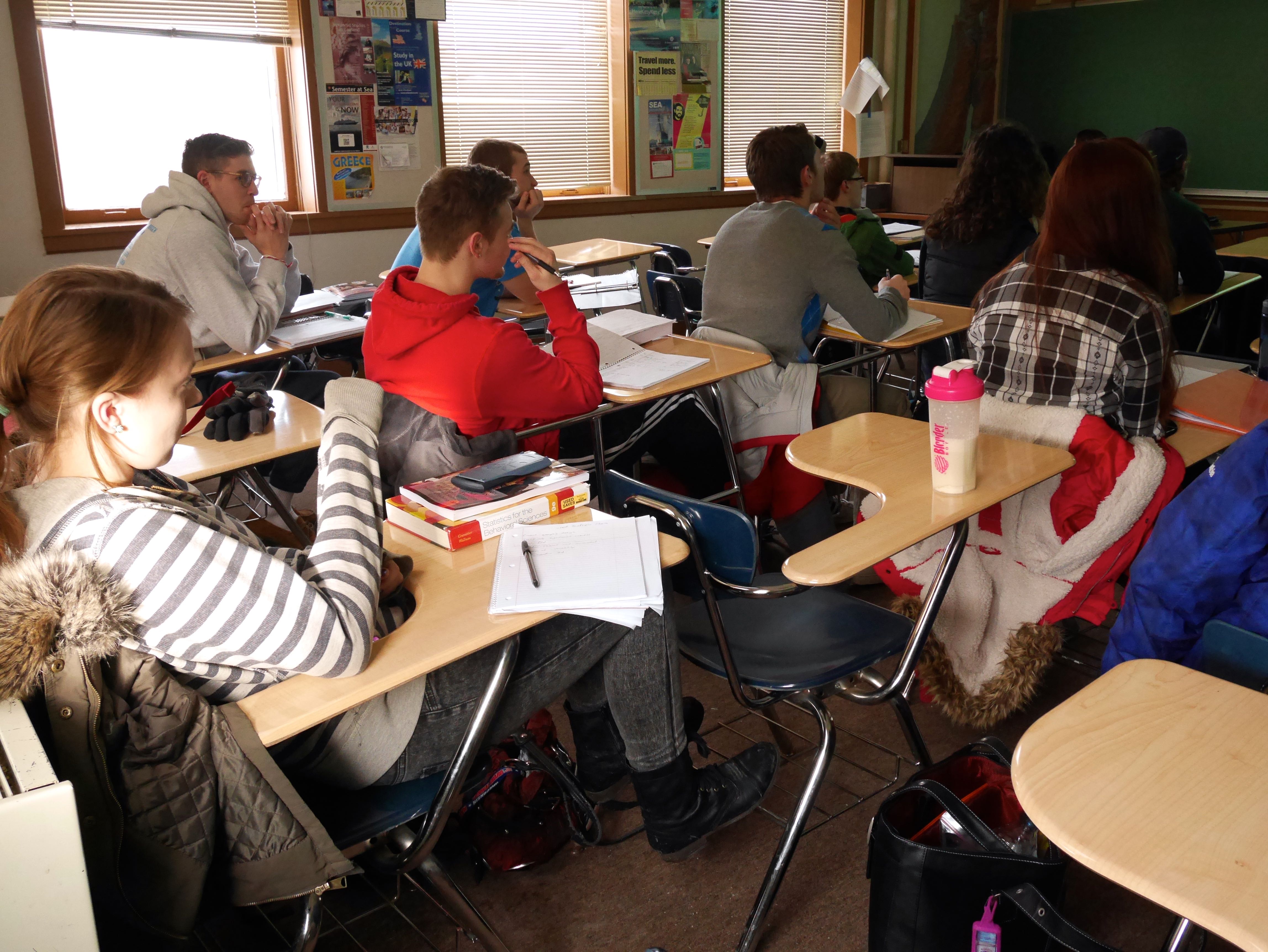
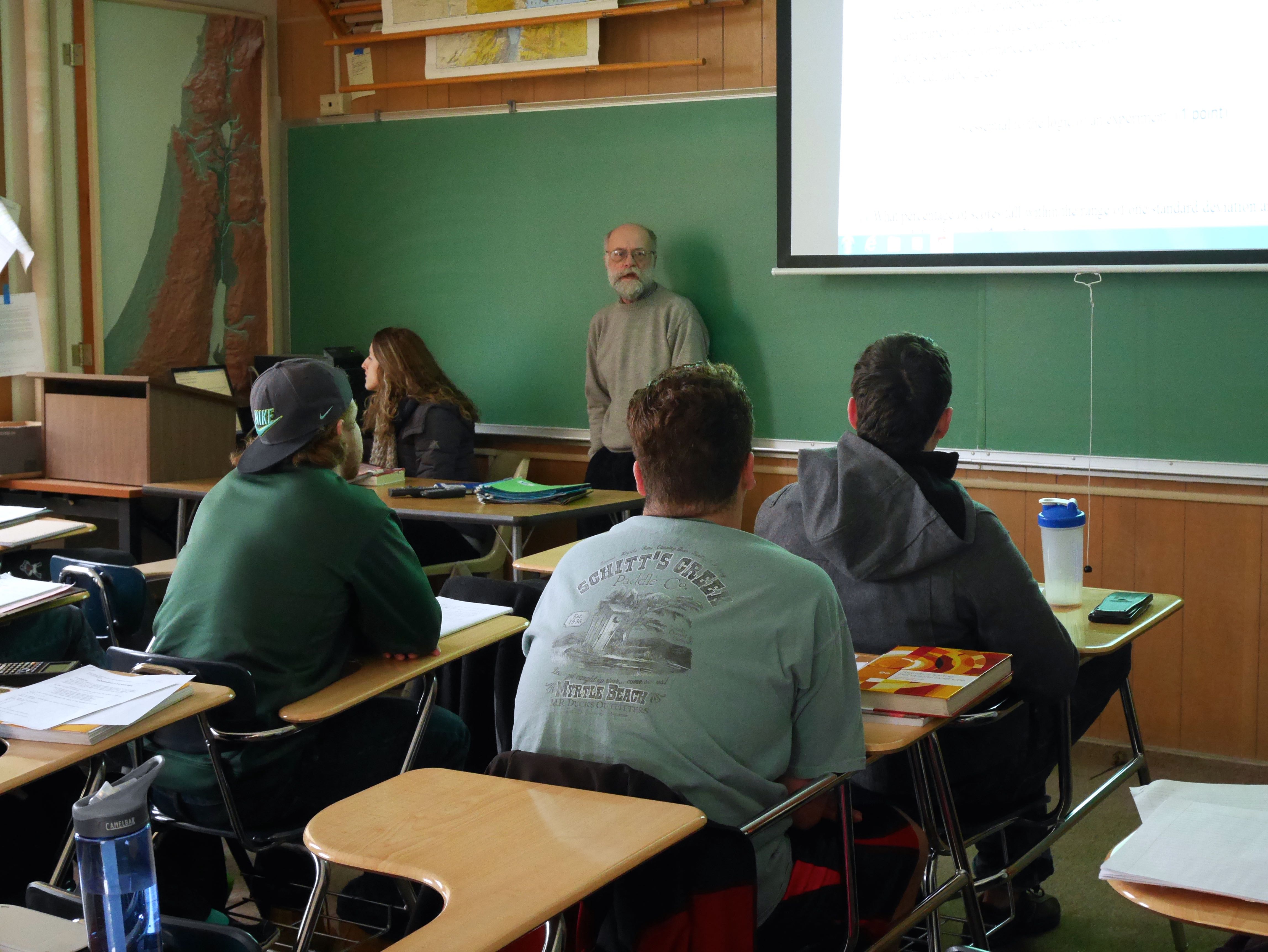
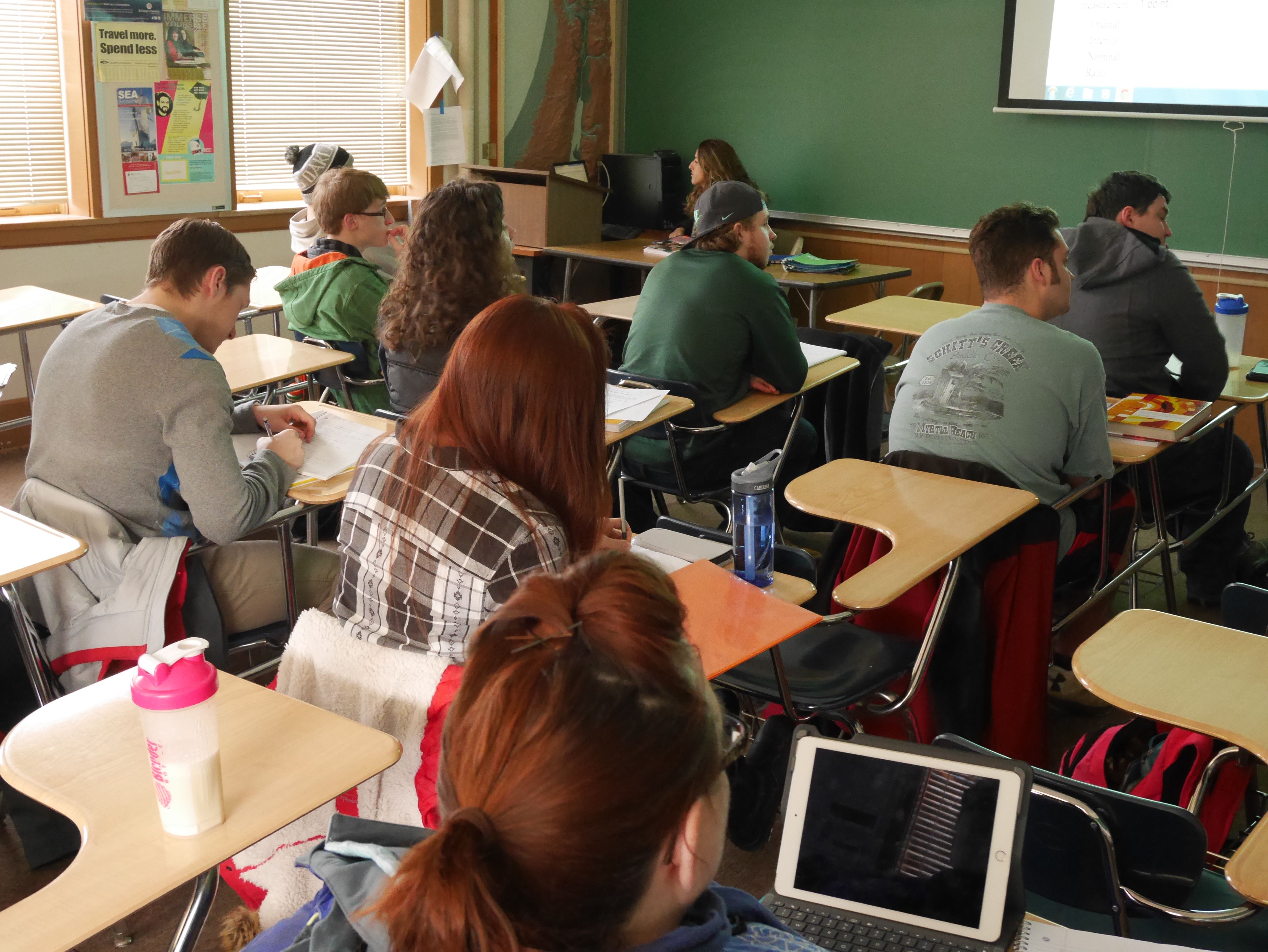

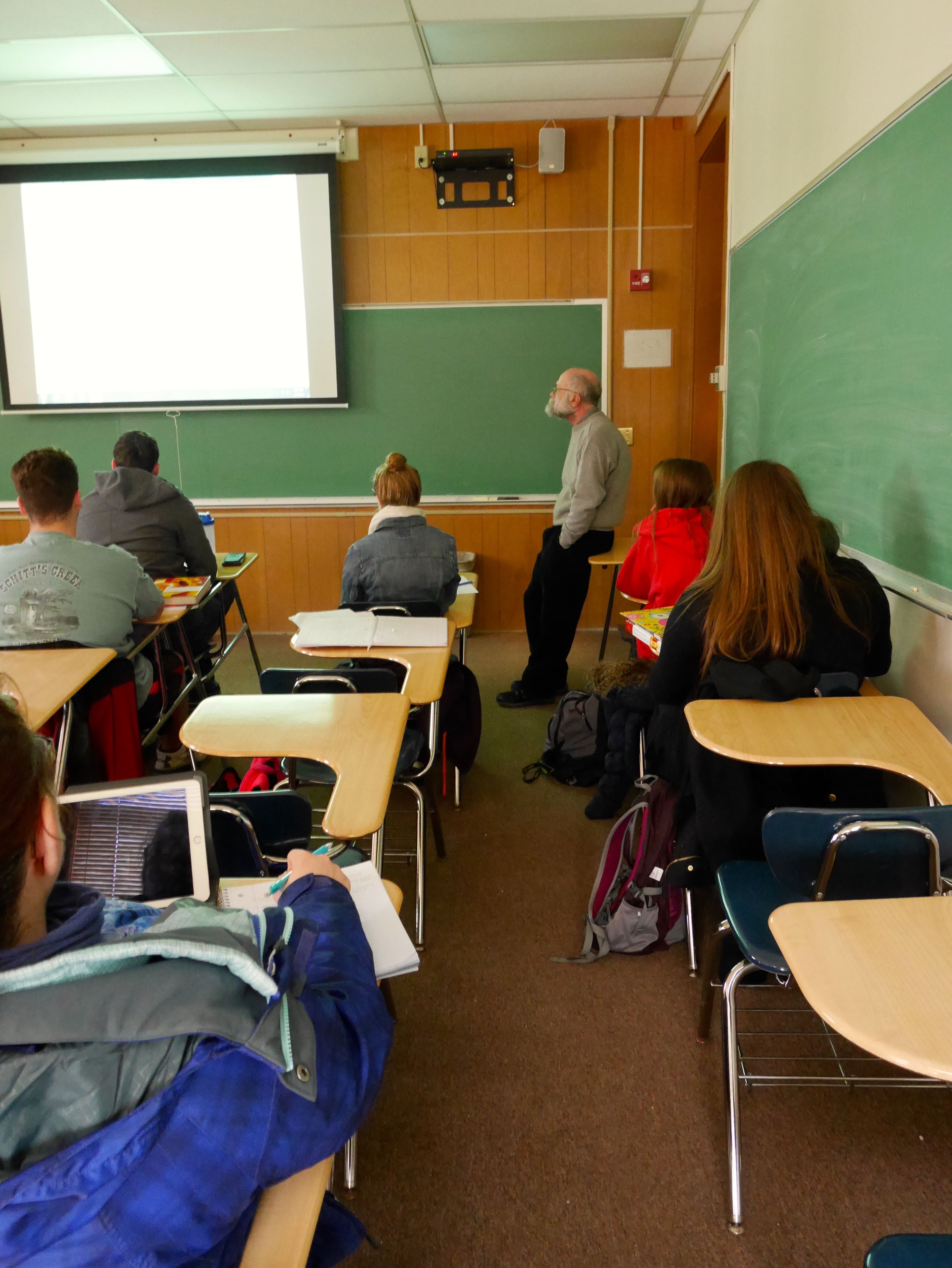
Good recent research suggests that repeated testing enhances learning. How can I best incorporate those important findings into my courses? As a beginning, I have revisited a piece of software,StarQuiz, (originally developed by a high school student) that has proven useful and reliable since I discovered it about 10 years ago. There is something comforting about using a piece of software for almost 15 years and across many evolving operating systems without a glitch.
I am considering incorporating it into my PSY205 “Statistics and Experimental Design Course” —if the students can demonstrate to methat it enhances their mastery of the course’s material. I welcome student feedback—and suggestions from other readers of software they consider better.
To try it enter your name—you need not enter your email address. If a “David” has already tried it, enter a different name (e.g. Voldemoort).

Here is a link to one of the two practice tests I shared with students in my class today. I encouraged students to collaborate, use notes, and be mutually supportive of each other in the process.
Here is a link to a second example which I introduced in my class.
And here is a review of SPSS (with bloopers!) Keep those constructive comments coming
(and you international viewers, I welcome your comments, too).
I’ve been Doing a Lot of Time Traveling Lately
I’ve been doing a lot of time traveling lately partly due to my bed time reading of the marvelous 900+ page paperback The Time Traveler’s Almanac. I’m tempted to try out Mr. Peabody’s Wayback machine.
This is also the time of year where I am flooded with memories of my time at Carroll (and my (in)formative years at Oberlin College and Ohio State). And I whistle a lot while walking across campus as I process this flood of memories. Once I get the semester successfully put to bed (with fond farewells to graduates at Commencement on Sunday), I need to turn my attention to sorting through photos, thoughts and memories in preparation for Mom’s memorial service on May 17.
Little Brother Bruce and Big Sister Connie Sue kindly sent me all the photos from Mom’s Sun City Residence. Can you pick out Connie, David, and Bruce as they looked in 1955? I wonder what we were thinking then? I think that I had gotten over my desire to run away from home because of the birth of Bruce and was trying to teach him how to read. I hadn’t yet started teasing Sis, though I may already have inadvertently locked her in the bathroom. Here are some of the events shaping our thinking then.
I can vaguely remember some of the radio show and TV shows. What do you remember from 1955? What would you like to remember when you are 65? 90?
Three Digital Tools in Need of My Sharpening
I’m in the process of revisiting several resources that have influenced my choice of online teaching tools. This post focuses on the book by Steve Johnson (2011)—a thoughtful and concise compendium of his thinking about today’s “tech-savvy” (high school age) learners and how to prepare them for their digital future. He systematically evaluates over 30 “etools” he judges to be useful for engendering collaboration, creation, and publication across the curriculum, and offers concrete suggestions for how to get started (and how to keep up) as an instructor. Among the many tools that he recommends that I have personally found especially useful for my teaching at the college/university level are the following:
- I have grown to like Animoto as a vehicle for creating and sharing video-like productions, despite its constraints of needing to use Adobe Flash and accepting only MP3 formatted music files. I have elected to have an educational account with them. Here is an example of how I have used it.
- WordPress is now my blogging tool of choice and the blogging tool that I teach to students. I myself move back and forth between WordPress.com (“David in Carroll Land”) and WordPres.org (“Curious David in Carroll Land”). The latter gives me far more creative freedom (e.g. the use of plugins) but at an additional cost (both financial and time I need to devote to its higher learning-curve). Here is an example of a WordPress.com blog piece in which my student research assistants shared “sand box” activities while they explored for me the value of some beta version software which showed promise to me of eventually being useful in the classroom. Here, on the other hand, is a recent blog piece co-written with my students using the WordPress.org blogging software (which I still am at an early stage of mastering). Without doubt, my best etool evaluators are my highly trained student assistants.
- Google Docs is becoming an increasingly important tool for me. Indeed, I would love to devote the time to create a Google Apps course for our students. Richard Bryne, an educator thought leader whom I follow on Twitter and whose contributions I benefit from, has created a wonderful comprehensive guide to this tool.
Presently my students are more facile with this learning tool than I!. We regularly use it as a means of collaborating and sharing documents —photos, videos, journal articles, rough drafts, spreadsheets. Just today one of my senior research seminar students shared with me, on Google Drive, a wonderful video she had made of her interviewing her twelve-year-old son about his experiences with a form of Asperger syndrome. Keri and I shortly shall be incorporating this video and her insights about parenting such a special child into a blog piece as a first step in assisting her in writing a book to share her knowledge.
Twitter Reconsidered
Five years ago I was quite hesitant to use Twitter. My student assistants found little value in using it. They failed to see differences between it and, say, the “update function” of Facebook. I read two books about it, consulted several Carroll alumni who DO use it (thanks Chris G, Lori S, and Fred K.), and studiedt fellow academics’ twittering experiences documented in publications which I closely read and value. I objected to the Procrustean process of having my thoughts, ideas, and communications reduced to 140 characters or less (“thought bytes”). Also, I was petrified at my inability to decrease or at least slow down my communication and information acquisition activities. I very much need and treasure having time to reflect, to read, to assimilate, and to create.
Since then, however, I have reconsidered Twitter as a learning tool. “To Twit or not to Twit?” for me is no longer the appropriate way to frame the issue. Rather, the questions for me are:
- Under what circumstances might Twitter be enable my capabilities for more successful teaching?
- How can I use Twitter to improve my ability to find answers to questions I am investigating?
- How can I minimize the costs to me (time away from other things; wheat to chaff ratio) of my using Twitter?
- How can I best manage the tool?
Today Twitter is an invaluable personal learning and communication resource that I have fine-tuned for my particular needs. Currently I choose to follow 78 “thought leaders” whom I very much admire. I am in the process of comparing several Twitter-management apps (e.g.Tweetbot) which show promise to help me optimize the efficiency of my use of the tool. Now I need to consider implementing these Advanced Twitter Tips I encountered tonight!
Canine Ruminations: Robin the Newf Helps Me Write a Blog Post
Robin the Newf is a guest collaborator tonight. Because of her presence (at my feet) I’ve been ruminating tonight about canine companions. My father-in-law, Walter G. Schmidt, also loved dogs. In fact his love of dogs was extolled in his eulogy given by the Reverend Charles Valenti-Heine:
…”And that world, for Walter, included his beloved Canines. Lucy, Canis, Oaf, Chaucer, Trollope, and Freud, the last named because Walter was told that the companionship of a good dog was of greater worth to people than any other therapy! The one time I remember Walter speaking in church was when Trollope died, and he stood up during joys and concerns to opine: ‘If there is a place in heaven for Presbyterians, then surely there is a place for greyhounds.’
To which I add, amen!
Rudyard Kipling warned us of how dogs can capture your heart!
Do dogs match their owners in physical appearance? in personality? There is an interesting body of research dealing with these questions. Here is one citation. Here is another entire article (Download Roy). Under what circumstances does pet ownership reduce stress? increase it? Why in the world did I spend $250 tonight on pet treats? Perhaps I still am affected by my first reading of Argos‘ blind enduring faith. Robin, the patient gentle giant, knows.
These might be questions to give my Introductory Psychology students to encourage them to conduct a scholarly literature review. Perhaps in the process I’ll teach them about Evernote, Diigo, Delicious, Zotero, and Google Scholar and have them help me compare the strengths and weaknesses of these tools in addition to comparing the kinds (and quality) of answers they get using Internet search engines versus library data bases.
Here is some anecdotal evidence provided by one of my playful students that owners like me (though there is a debate between Robin and me as to who is the owner) may start looking like their dogs!
Trivia question from Robin:
What was the name of the Newf who accompanied Lewis and Clark?
Answer is here if you fail to find out—and even if you do.




